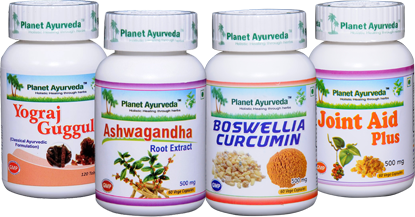Abstract
The equine industry has become one of the most promising fields of sports and heart-racing events. The integrity of this industry is influential; offering a wide range of opportunities. Unlike livestock, the qualities of an equine owner are diverse and dynamic. Stud farms with horses that represent breeders, trainers, boarding and farriers require a wide range of products such as engineered feed products, custom-designed grooming kits and restraining apparatus etc. With the excitement that accompanies equine practice, comes the laborious and intricate, starting from the hoof-care apparatus to vaccination drives, the labor requirement is predominantly high. Equine Medicine and Surgery has become one of the most scintillating fields of veterinary specialization and practice due to its tremendous scope of activities and appeal. As modern medicine continues to grapple towards the zenith of the domain, the ancient Hindu art of medicine, ‘Ayurveda‘ heralds a new age of panacea in Equine Medicine and Management.
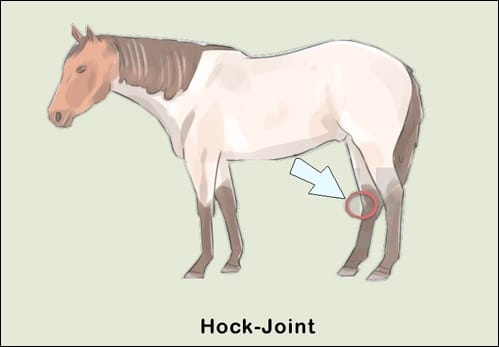
Introduction
As one of the most athletic and bodacious beings, horses are highly vulnerable beings to a multitude of diseases and disorders. Most renowned or extravagant racehorses live in the grand abode equivalent to five-star hotels, nurtured aplenty with care and attention, are well glutted and rugged with care and attention. Despite all the effort channeled into their maintenance, most senile race horses ragged from extensive training and shows are vulnerable to degenerative joint diseases, which are collectively termed as osteoarthritis.
Changes in the mobility patterns or structural gait of horses are precursory symptoms of lameness. Most equine training strategies sort through an array of therapeutics ranging from physiotherapy and alternative strategies. The degenerative cycle is instigated by joint instability or injury due to prolonged inflammation of the synovial membrane- possible reasons for such chronic pain can be due to trauma or inadequate maintenance. Other pathological conditions that are commonly observed include Bog Spavin, Bone spavin and curb.
The equine hock joint, crucial to jumping and galloping, is a complicated structure prone to deterioration and injury. The hock comprises ten bones and four joints, which are additionally supplied with ligaments. The tarsocrural joint, located in the top section of the hock, is the largest joint characterized by the widest range of motion. Tendon displacement from the hock, which results in muscle rupture, might have an impact on the tarsus. Where there is tension on the hock joint, further aggravating inflammation and interfering with typical structure and function, there may be hock lameness.
Older horses are more prone to osteochondrosis and arthritis because four separate joints work together to communicate. Usually included are the tarso-metatarsal joint, proximal intertarsal joint, distal intertarsal joint, tarso-crural joint and tibiotarsal joint.
Bog spavin is usually a soft swelling on the inner surface of the hock of horses resulting from chronic inflammation of the hock joint with the accumulation of fluid in the joint spaces. Certain studies reveal excessive strain on joint capsules or a series of sprain or mild fractures in the hind limbs.
Bone spavin, a colloquial term used for osteoarthritis of the hock joints, results in gradual loss of cartilage and bones which causes, subsequently leading to persistent lameness in the hind limb.
Curb: is a term traditionally used to describe soft tissue injuries resulting in swelling or enlargement at the rear surface of the hock due to thickening and bowing of the tarsal ligaments. There is a four-inch expansion under the hock point, a frequently occurring condition in standard breeds.
While lameness may not be prominent initially due to prolonged wear and tear; deterioration is noted in the integrity of cartilage changes, causing osteochondritis dissecans. Nutritional deficiencies of calcium and phosphorus, vitamins A and D or in any other combination can cause structural alteration of joints. Symptoms such as change in gait, stiffness, hesitance to work, and soreness in the muscles of the back are commonly observed. Veterinary diagnostics such as imaging with radiographs, sonography, MRI (Magnetic Resonance Imaging) and CT (computerized tomography) scans display a map for vets to analyze and provide an effective regimen. The treatment is usually based on the manual aspiration of joint fluid from spaces by a skilled veterinarian. Corticosteroids, Hyaluronic acid injections or NSAIDs (Non-Steroidal Anti-Inflammatory Drugs) therapy to reduce inflammation, and pressure bandaging has provided significant results with regular observations and re-bandaging, antibiotics, cytokine therapeutics, laser therapy etc.
Ayurvedic Contribution To Equine Veterinary Medicine
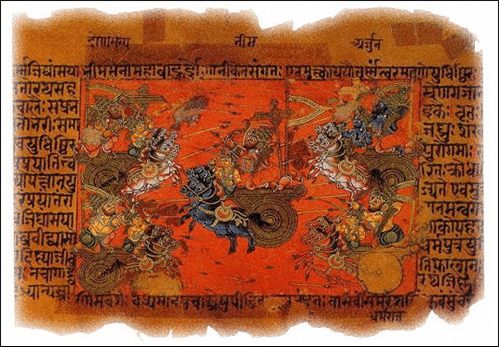
Ayurveda is a science based on the principle of environmental relationship with the being, it classifies individuals based on their bodily structure, function, and environmental context in a language which is highly reflective of lifestyle and health. Equine species are inextricably linked to the natural laws of the universe, with a deep intimate interpenetration of their souls and the essence of the cosmic universe. Ayurvedic practice offers a plethora of therapeutic interventions, each of which is clearly articulated. Dryness, roughness, fluidity, oiliness, coldness, hardness, and heat are all recognised by Ayurveda. Treatments include massages and herbal decoctions.
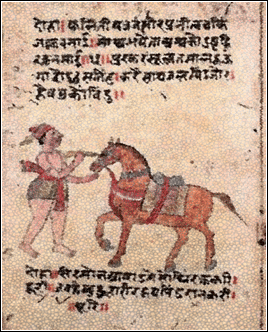
Ayurvedic Aspect Of Degenerative Joint In Horses
According to Ayurveda, joint diseases primarily occur due to an imbalance of tridoshas (three dosha theory: Vata, Pitta, Kapha) thereby inducing inflammation of the joint in the body. Doshas (fault or defect) are classified as body and mind.
Each dosha represents a different part of the body. Each has its own and is associated with a unique set of functional requirements. While this is a very layman’s explanation of the age-old medical system of Ayurveda, authors and researchers of this field hope that it opens your heart and mind to a scientific, clinically proven, and natural healthcare system.
Pollution of the doshas causes morbidity in weak tissues producing an array of symptoms. For instance, when there is an imbalance in vata dosha, dryness, and lack of lubrication is observed which when aggravated, leads to the detriment of the structure of the joints, leading to effusion and swellings.
Another dosha, “Pitta” which gets triggered results in inflammation and “Kapha” gets accumulated there is an increase in morbidity of the joints which causes effusions and swellings.
Toxins are collectively termed ‘Ama‘ in Ayurvedic discourse and are held responsible for the dysfunction of cellular integrity and dyspepsia (indigestion and stomach upset) which further amplifies autoimmune disorders in the joints. The following is a brief description of tridoshas based on their element and nature.
1. Vata Criteria (Ether & Air)
Body
Horses with this dosha’s body are lean, refined, small-framed individuals with flat chests, visible muscles, veins, and tendons, rough skin, and alert eyes.
Personality
They lack determination and have a proclivity for mental instability, tolerance sensitivity, confidence, or boldness. Vata horses are nervous and anxious, quick to remember but also quickly to forget. High blood pressure, increased heart rate, irregular heart rhythms, muscle spasms, lower back pain, constipation, bloat and colic, a type of abdominal spasm, diarrhea, fragile gut motility, and arthritis are all risks for horses with this dosha.
Wellness
High blood pressure, increased heart rate, irregular heart rhythms, muscle spasms, lower back pain, constipation, abdominal gas accumulation leading to bloat and colic, diarrhea, fragile gut motility, and arthritis are all risks for horses with this dosha.
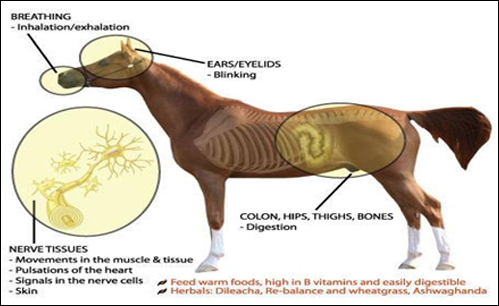
2. Pitta Criteria (Water & Fire)
Body Type
These horses have a medium build and are strong and well-built. The coat is soft and warm, with a moderate prominence of veins and muscle tendons; their metabolism is thought to be strong, immune, and digestively sound, resulting in a voracious appetite.
Personality
The behavioral pattern is sharp and intelligent, with good comprehension. They are easily influenced by feelings of hatred, anger, and jealousy. Racehorses of this dosha are known for their competitive nature, enjoyment of a challenge, and are easily irritated if they miss or have to wait for a meal. They can be demanding and pushy when they are out of balance. They are confident, assertive, and aggressive.
Wellness
Rashes or inflammations of the skin, acne, boils, skin cancer, ulcers, heartburn, acid stomach, hot sensations in the stomach or intestines, insomnia, bloodshot/burning eyes, anaemia, and jaundice are common in horses with this dosha.
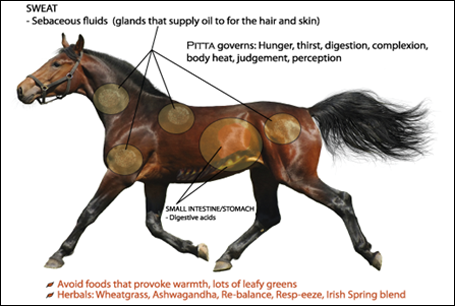
3. Kapha Criteria (Water & Earth)
Body
Horses with the Kapha dosha are known for their strength and muscular physique, which allows them to perform herculean tasks such as carrying extra weight. Broad and voluminous chests are frequently described. Kapha horses move slowly and gracefully. Their eyes stand out. It has a dense, dark, and soft coat. Their appetite is incredible.
Personality
Horses of this dosha are affectionate and loving, forgiving, compassionate, nonjudgmental in nature, stable and dependable; faithful, calm, and striving for peace. Horses with this dosha are known for being possessive.
Wellness
Colds and congestion are common in horses with this dosha, as are respiratory problems like asthma and wheezing, hay fever, allergies, and diseases in the arteries, as well as chest, throat, head, sinuses, nose, mouth, stomach, joints, cellular morphology, and dynamics.
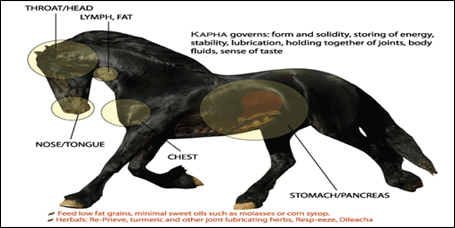
As exciting as equine practice gets, the husbandry aspect and general maintenance are quite laborious and intricate, starting from the Hoof-care apparatus to vaccination drives, and the labor requirement is predominantly high. Despite all the effort, most senile race horses which endure extensive training and shows are vulnerable to `Degenerative joint diseases` which are also referred to as Osteoarthritis. The change in mobility patterns or structural gait of horses represents the initial symptoms of lameness. Most equine training strategies provide a wide range of therapeutics such as physiotherapy and alternative strategies.
The equine hock joint is a complicated structure which is prone to deterioration and injury and plays a significant role in the production of `jump` and gallops`. Where there is tension on the hock joint, which further aggravates inflammation and interferes with normal structure and function, there may be hock lameness.
Bog spavin: It is usually a soft swelling on the inner surface of the hock of horses resulting from chronic inflammation of the hock joint with an accumulation of fluid in the joint spaces.
Bone spavin: A colloquial term used for osteoarthritis of the hock joints which results in gradual loss of cartilage and bones and causes persistent hind limb lameness.
Curb: A term traditionally used to describe soft tissue injuries that cause swelling or enlargement at the rear surface of the hock due to thickening and bowing of the tarsal ligaments.
Ayurvedic Contribution To Equine Veterinary Medicine
Ayurveda is a science based on the principle of environmental relationship with the being, the science classifies individuals based on their bodily structure, function and their surroundings and lifestyle, in an energetic language which reflects lifestyle and health. The practice of Ayurveda offers a plethora of therapeutic interventions, and each is articulated differently.
Ayurvedic Aspect Of Degenerative Joint In Horses
As per Ayurveda, joint diseases primarily occur due to an imbalance of tridoshas (three dosha theory: Vata, Pitta, Kapha) which induces inflammation of the joint in the body.
The Role Of Herbal Elements In The Treatment Of Equine Joint Diseases
Ayurveda makes use of herbal compounds to promote health and healing. The basic formulary of humble ingredients such as turmeric, ginger and coconut oil reduces inflammation, promotes healthy digestion and is characteristic of antimicrobial properties. Mahanarayan oil is an exemplary staple for external massages to alleviate muscle sores and soft tissue injuries.
1. Ashwagandha (Withania somnifera)
Ashwa: Horse, Gandha: Smell
Traditional medicine makes use of this short, woody shrub. It helps to balance the Kapha and Vata doshas. Ashwagandha contains a lot of antioxidants, which can help boost your immune system and treat allergies. It promotes joint health as it contains anti-inflammatory properties that alleviate joint pain and swelling. Ashwagandha boosts the immune system and has anti-cancer properties that encourage the growth of healthy cells.
Further, the herb aids in neurological dysfunction such as multiple sclerosis, and low vision – optimizing the lymph flow and amplifying the vigour of the immune system.
2. Shallaki (Boswellia serrata)
a.k.a ‘Indian Frankincense‘
Shallaki is a well-known herb that can help with osteoarthritis and other types of muscular pain. Studies have proven that Boswellia reduces the degradation of glycosaminoglycans thereby promoting healthy joints. Helpful in balancing Pitta and Kapha disorders to treat knee pain, Shallaki improves joint mobility and flexibility and is a potential prokinetic. Shallaki functions as an NSAID, affecting two classes of arachidonic acid-derived mediators of inflammation: prostaglandins and leukotriene. PGE2 (a cyclooxygenase product) mediates pain and oedema, PGF2a mediates VSO and bronchoconstriction and PGE1 reduces fever and pain.
Studies show that the leukotriene pathway, wherein the key enzyme 5-lipoxygenase, is situated, is involved in the prognosis of various inflammatory diseases. These include rheumatic arthritis, ulcerative colitis, bronchial asthma and psoriasis. The active ingredient of boswellia effectively blocks the synthesis of 5-lipoxygenase therapy. It inhibits the inflammation process.
Shallaki also aids in the cases of external wounds and bruises, reduces bronchial muscle contraction due to the reduction of leukotriene, which is responsible for the compression of the bronchi, in the lower tract, and aids female reproductive health.
3. Haridra (Curcuma longa)
otherwise known as Turmeric
A tall herb, rootstock large, ovoid with sessile tubers with a bright orange tone inside and cultivated throughout the tropical regions of India. It is beneficial in stabilizing the body’s tridoshas. Beneficial for worm infestation and removing doshas from the head (Shiro virechana). The herb is used for purifying any ama in the blood which aids in the expulsion of harmful components from the body, furthermore, it has anti-inflammatory properties that are beneficial in bone-related disorders. Haridra rejuvenates the skin to heal skin sores and contains antioxidants. The phytoconstituents consist of volatile oil, resin and starch grains, and curcuminoids which contain sesquiterpenes such as camphor, camphene and zingiberene. The decoction of this herb can be used to pacify kapha and pitta doshas. Other benefits include Pro-apoptotic and anti-proliferative against harmful carcinogens and free radicals which cause lethal effects against cartilage and other fibrous joints.
Horses with Equine Metabolic Syndrome (EMS) are more likely to develop painful laminitis, as well as other degrees of joint pain and inflammation. The Curcumin component in the Haridra plays a vital role in maintaining stability for pancreatic insufficiencies and pancreatitis.
Studies show curcumin supplementation has been shown in diabetic mice and in vitro laboratory models to improve insulin sensitivity and stabilize blood glucose levels. It has also been shown in animal models to reduce inflammation and oxidative stress, both of which are major contributors to insulin resistance.
Curcumin’s improvement in insulin sensitivity may also be mediated by bile secretion. Bile acids stimulate hormone secretion from the intestines, which increases insulin sensitivity.
4. Guggul (Commiphora Mukul)
Guggul helps to balance the digestive and circulatory systems. It is beneficial in removing Ama, which is beneficial in controlling rheumatic and arthritic pain, as well as removing gynaecological problems and various skin disorders. Balances the body’s tridoshas and is a well-known remedy for Vata disorders. Increases sexual power, which is beneficial in dysmenorrhea and leucorrhea. Improves the complexion and treats a variety of skin problems. It has not only successfully treated lipid disorders and thyroid issues such as hypo- and hyperthyroidism, but it has also been used to treat fatty tumors, skin lesions, and wounds.
The digestive system is presumed to be stimulated and toned by guggul. It has been used to treat conditions such as rheumatoid arthritis, obesity, skin diseases, urinary bladder issues, and nervous disorders. It also works well as a gargle for gum disease and chronic tonsillitis. Guggul’s lipid-regulating effects are due to its thyroid-stimulating action. Increased levels of circulating thyroid hormones are known to lower serum lipid levels, and (z)-guggulsterone, a ketosteroid found in guggul, is one such agent. This thyroid-stimulating property explains why guggul has traditionally been used to treat thyroid-related conditions.
5. Triphala
(Sanskrit; tri = three and phala = fruits)
An ancient Ayurvedic remedy revered for its many therapeutic actions, triphala is the combination of the fruits haritaki (Terminalia chebula), bahera (Terminalia bellerica), and amla (Phyllanthus emblica).
Triphala has traditionally been used as an antiseptic for wounds, surgeries, and burns, it has also been used as a digestive, mild laxative, mild diuretic, and adaptogen. However, it is most commonly used as a rasayana, or rejuvenating formula. Rasayanas, substances that constantly rejuvenate the body, are said to balance all body types. Triphal is an excellent intestinal cleanser, according to modern research and centuries of use. Unlike most other laxatives, triphala aids digestion before aiding in the elimination of toxins from the body. It has been used successfully to treat indigestion, carbohydrate intolerance, anemia, diabetes, chronic lung diseases, hypertension, elevated cholesterol, and other conditions.
Herbal Remedies For Diseases Of Horses Affecting The Hock Joint By Planet Ayurveda
Planet Ayurveda manufactures products that are originally synthesized from botanical extracts and do not contain any adulterants such as animal fats or binders for any qualitative or quantitative purposes. A national board-certified institution with renowned approval of USA-FDA and GMP certification validates these Ayurvedic remedies from ancient archives and texts. The products engineered are organic and are tested by national and international authorities prior to marketing.
A LIST OF AVAILABLE PRODUCTS
- YOGRAJ GUGGUL
- JOINT AID PLUS
- BOSWELLIA CURCUMIN
- ASHWAGANDHA CAPSULES
Products Description
1. Yograj Guggul
Planet Ayurveda’s Yograj Guggul is a polyherbal tablet containing a variety of ingredients such as Chitraka (Plumbago zeylanica), Yavani (Trachyspermum roxburghianum), Ela (Elettaria cardamomum), and others. It has anti-inflammatory and analgesic properties and aids in the balance of the body’s tridoshas. Improves digestion and helps with Vata imbalance disorders.
Dosage: Consume six tablets twice daily with some warm water.
2. Joint Aid Plus
Planet Ayurveda and Sonth (Zingiber officinale) developed Joint Aid Plus, a polyherbal capsule containing ingredients such as Nirgundi (Vitex negundo) and Shallaki (boswellia serrata). It is effective in treating sciatica pain and inflammation. The composition of this product contains numerous pain-relieving properties, such as anti-inflammatory and analgesic properties.
Dosage: Consume four capsules twice daily with plain water after food.
3. Boswellia Curcumin
Planet Ayurveda’s Boswellia Curcumin is a polyherbal capsule made from Shallaki (Boswellia serrata) and Curcumin (Curcuma longa). It is the most effective in reducing inflammation and swelling. Maintains joint health, is high in antioxidants, and has neurological protective properties. It alleviates morning stiffness and reduces cerebral edema.
Dosage: Consume four capsules twice daily with plain water after food.
4. Ashwagandha Capsules
Planet Ayurveda’s Ashwagandha Capsules are a single herbal capsule made from a standardized extract of Ashwagandha (Withania somnifera). It is useful for analgesia (reducing pain) and has anti-inflammatory properties that reduce swelling and pain. It nourishes the brain and improves mental ability. Ashwagandha capsule is a potent immune booster that eliminates free radicals and slows the aging process.
Dosage: Consume four capsules twice daily with plain water after food.
Conclusion
Ayurveda utilizes herbal compounds to promote health and healing. The basic formulary of humble ingredients such as turmeric, ginger and coconut oil reduces inflammation, promotes healthy digestion and has antimicrobial properties. It promotes healthy joints because it has anti-inflammatory properties that relieve joint pain and swelling.

